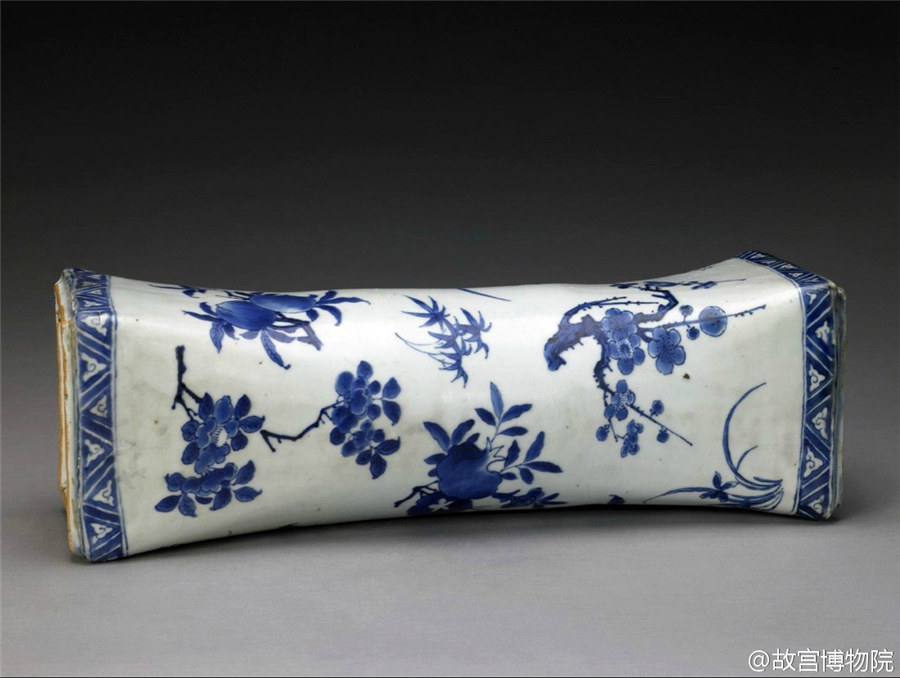

During the Yuan Dynasty (1279-1368), due to restrictions on the free development of the commodity economy, handicraft production, including pillow making, experienced a decline. However, the blue-and-white porcelain pillows from Jingdezhen in Jiangxi province showcased intricate carvings and meticulous craftsmanship, highlighting the enduring legacy of this art form.
During the Ming (1368-1644) and Qing (1644-1911) dynasties, the popularity of porcelain pillows waned, gradually giving way to the preference for softer pillows.
During this period, pillow designs became more diverse and various materials such as rattan, lacquer, jade, cloth, cotton and leather were used. Some cloth pillows were adorned with embroidered patterns on the surface, showcasing the artistry of Qing Dynasty folk embroidery.
Notably, some ancient pillows were crafted in the shape of a chest. These rectangular and hollow pillows featured storage space inside, giving rise to the saying "book hidden in a pillow" during ancient times.
With the advancement of technology, a wide variety of pillows have emerged, each offering different functions based on the materials used for filling. Today, Chinese pillows continue to be crafted with great care, combining traditional designs with modern materials to ensure a comfortable sleeping experience.